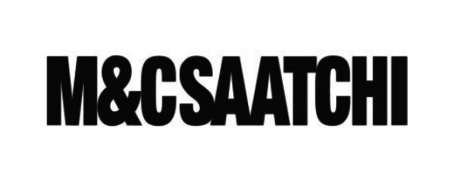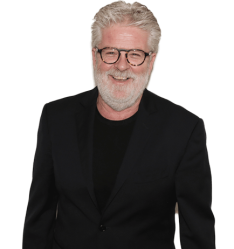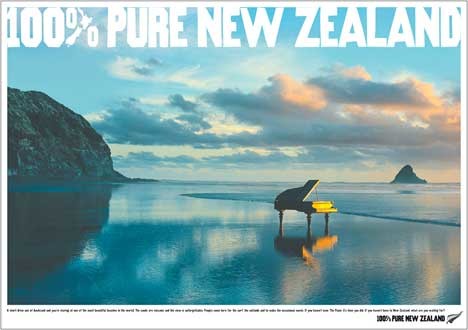‘The big end of town’: Charting M&C Saatchi’s eventful journey to adulthood
As M&C Saatchi celebrates its 21st birthday Simon Canning looks at some of the highs and lows of one of Australia’s biggest creative shops.
Twenty one years ago I sat in a penthouse room atop the Regent Hotel with Maurice Saatchi, Bill Muirhead and Tom Dery, one of a handful of reporters witnessing the birth of a new agency from the ashes of one of the greatest splits in the industry’s history.
The Saatchi brothers, Maurice and Charles, had been ousted from the eponymous agency they founded – Saatchi & Saatchi – and the response was to start straight back up again – with two of Saatchi’s biggest clients – British Airways and Qantas.
Qantas required an Australian agency, so it was left to Dery, original creative director Roy Meares and MD Simon Corah to build the business from scratch.
From my perspective, the feeling in the room was ‘how could they pull this off?’ Threats of legal action from Saatchi & Saatchi’s parent company were real and the team was operating with no premises or staff. It wasn’t until months later, after the settlement of a court case in London, that the venture got the complete go ahead – even as it was creating ads.
For Dery, his memory of trying to convince us this would work was one of supreme optimism.
There was no pomp or ceremony, just a small group of people on couches teasing out the idea of what M&C would stand for and why the flagship airlines of two countries had thrown their lot in with them on little more than a promise.
The relationship with Meares was short-lived and, just over a year after the agency opened, he decided to move on – to set up his own agency in New Zealand.
Meares’ departure opened the door for Tom McFarlane to take the creative reins. And the agency has never looked back.
Two decades later, the two Toms (Corah left the agency several years ago to strike out on his own with a successful consultancy Growth Mantra), have moved several hundred yards east of the room at the Regent to Macquarie Street – the address, Dery says, confirms that the agency has made it.
“Obviously I was super confident. Perhaps ridiculously so,” Dery told Mumbrella. “Because I’d committed myself to building a great business.
“The other thing is I was not interested in the past. It really did not worry me one bit about all the the controversy with the Saatchi split; I was interested in the future so I looked on with some amusement at the time. But I had great faith in my partners, Maurice and Bill, really wanting to do something special, and that’s all I needed.”
He said the biggest challenge on day one was how to meet the needs of a huge, demanding client.
“How do we get the work out for Qantas when it’s just me and a couple of people I have got on the horizon.”
Two pieces of work quickly emerged from the agency – a TV ad featuring a Japanese pearl diver promoting Qantas as “the world’s long distance airline” and a press ad promoting new seats in the embryonic business class sector of the airline.
As the business began to lure staff, Dery and his team moved from the hotel to the offices of POL Publishing in Redfern – space donated by a mate (albeit with the team worried as to how it could meet the rent of $1,000 a month).
“He kindly gave us a room…we we ended up with about 20 people in that room and we needed more space, and Peter kindly gave us more space, but by six months he said ‘enough’s enough, get out’,” said Dery.
The agency moved into offices in Pitt Street, bringing it closer to Dery’s goal.
“My dream was always Macquarie Street. It was on the edge of the city and at the big end of town, which is where we wanted our clients [to come] from. But in many ways it was the most beautiful street. It led down to the Opera House, it was opposite the Botanical Gardens.”
Now established, new business became the focus of the agency as it moved to create a critical mass beyond its foundation clients.
“First and foremost it was about getting a fabulous creative partner and I was fortunate that I had worked with Tom McFarlane in a former life and he agreed to become a partner and join us. Frankly, it’s been a partnership between him and I that has really built a lot of the growth, so having that support gave me enormous confidence to go out and hunt for business.
“We started off with a couple of little projects for McDonald’s, but that’s all they were – but it was a good start.
“I think the first major breakthrough came with the ANZ bank.” The ANZ win put M&C on the map in Australia as more than a one-client agency when it won the business in 1997.
https://www.youtube.com/watch?v=_XSVEHoKFIs
Dery and McFarlane wrong-footed rivals who thought the agency had no chance of winning the Melbourne-based account from its Sydney office by setting up a mock office across the street from ANZ complete with reception.
Some described it as an audacious deception, others as a brilliantly calculated demonstration of M&C’s powers of persuasion.
Whichever it was, it was a brutal demonstration of the lengths the agency was willing to go to to win, and M&C’s Melbourne fantasy became a reality.
“It was actually to convince them that having an office didn’t matter. An office is an easy thing to set up but what matters is having the right people on the business, and that we were able to prove that we could do.
“Our whole business was based on winning very big clients and having long term relationships. That’s really what we set out to do and we have been able to do that, and hopefully we will be able to do it in the future.
“We had a long relationship with Qantas, a long relationship with ANZ Bank, a long relationship with Woolworths, a long relationship – and we still have – with Optus.
“Now these are very significant organisations that have great needs in the area of marketing and communications. We have been able to build terrific relations with them and grow together.”
Another early client that helped to put the agency on the global map was Tourism New Zealand, for which M&C created the celebrated 100% New Zealand campaign.
The work was held up as the most effective piece of tourism promotion and nation branding in the world, playing on the purity of the nation and its adventurous spirit.
It also coincided with offices opening across the Asia Pacific region.
“One of the things I wanted to do was…have a footprint across the Asia Pacific region, and my friends in London were happy for me to do that, if it could be achieved.
“Some people were a little unsure that this could be achieved, but it has been and it is one of the things I’m very proud of.”
Having quickly gone from an agency rivals thought could be dismissed to one they did not look forward to pitching against, Dery says that much of that transition was a result of the people the agency hired.
“We were so blessed with good people. In the early days, Simon Corah was there, but after that we just attracted outstanding people in all forms – whether it was creative, account service or production. Many of whom are still here and many have left to go on to do amazing work.
“The fact we were able to attract and retain outstanding quality people, I think, was one of the biggest factors in our success.”
Not everything has been perfect, though. Qantas moved on and when ANZ ditched the agency in 2011 after 14 years, Dery was genuinely perplexed at the reasoning behind its decision. It lost Woolworths to the latest new kid on the block, Droga5.
“Three phone calls that everyone dreads in our business,” he reflected.
“We had a phone call about Qantas, we had a phone call about Woolworths and we had a phone call about the Optus repitch. That was the toughest moment I can remember, and I think Tom McFarlane would say the same.
“We could have done a number of things at that point: we could have said, ‘look, we’ve done all right, let’s just cruise along and accept our fate’, or turn around and fight like hell.
“We have been able to survive that and, in the case of Optus, not only did we win it at that time but we have also re-won it in the latest round – in a different form, but frankly we still retain the major part of it.”
The latest Optus pitch has resulted in the arrival of Ted Horton’s Big Red on the roster, something that does not concern Dery too much, but he expressed his views on the Coles work in The Australian, in 2012: “I would have to say the “Down, down, prices are down” Coles campaign, however effective, is the most irritating.”
https://www.youtube.com/watch?v=gGY1QFEmyQk
In the late 1990s M&C also started to track the changing face of the industry by branching out into new areas. PR was an early space to be filled with the creation of Open Dialogue, only for the founders of the agency to decamp, complete with all the clients.
It wasn’t the sort of thing that made headlines but the industry took note. M&C was forced to rebuild its PR offering from scratch, this time deciding against its preference for building organically and acquiring Bang PR, in 2012.
Another false start was the move into digital in the late 1990s, with the launch of eM&C – focusing on e-commerce rather than marketing. Timed perfectly for the doctcom crash, the business faltered, only to re-emerge later as Mark.
Dery also laments that he was too slow to recognise the resurgent importance of media and wishes he had set up M&C’s media arm sooner.
“I would have liked to have started a media business much earlier. I would have like to have started a media business a long time ago.”
While he may feel he was too late to the media party, one thing Dery hopes to do is to remember the lessons other agencies have learned.
When M&C won Optus, it was on the incumbent George Patterson dumping the account to join with Telstra.
Accounts of the day vary, but with history being written by the victors, Dery notes that Patts jumped ship from Optus when they realised M&C had won. Its small victory was getting a release out to the market saying it was joining Telstra, with Optus announcing M&C’s appointment just hours later.
It was the beginning of the end for Patts as the unassailable force in Australian advertising.
“I have enormous regard for the George Patterson agency and the culture they created,” Dery said.
“I was in awe, frankly, and we made no bones about the fact that we wanted to be as successful as that. But since their demise we have also used them as an example to make sure that we never lose our culture and never take for granted what took us to where we are. I’m very saddened by the loss of George Patterson.”
One of the major lessons was handling the issue of staff retention and the workload as the business grew from its formative state at a massive pace – Dery, McFarlane and Corah had proven themselves adept at winning new business.
Many in the industry viewed the agency as a sweatshop, while staff turnover was high and the executive team finally had to settle on internal restructuring that took the load off the troops at the coalface.
Another element that helped to turn the tide of staff turnover and enabled M&C to perform better in the recruiting market was a decision by Dery and McFarlane to buy a slice of the local business to allow them to incentivise local staff with a share in the agency.
It was a plan that had been used to great effect by Clemenger, and Dery believes – just as he and his fellow agency founders worked harder for the business because they had a sense of ownership – it has been pivotal in keeping staff focused on the business.
Along the way M&C’s work has been largely uncontroversial but for one significant exception – its dalliance with Tourism Australia.
Having redefined tourism marketing with its New Zealand work, it won the tender for the $60 million creative account and immediately began working with Tourism Australia’s bombastic managing director, the man who would one day be treasurer, Scott Morrison.
The result was Where the Bloody Hell Are You? The most divisive and controversial campaign in the history of the tourism body.
Some (myself included) saw the aggressive positioning as devaluing the Australian brand, as newfound model Lara Bingle strode across a beach, demanding of the world: “Where the Bloody Hell Are You?”
In Australia’s key target markets of the UK and US, the ad faced a ban, while in some Asian countries the line was not even used, effectively incapable of a clear translation.
At the press launch for the campaign I spotted Tourism Australia chairman Tim Fischer legging it before the ad was even unveiled – telling me he ‘had another meeting’. It was, I thought at the time, an ominous sign.
Tourism Minister Fran Bailey hopped on planes to head overseas to defend the ad.
Dery, though, has a different view, noting that years on, Bingle is a celebrity and Where the Bloody Hell Are You? has entered the national lexicon despite the ad screening officially only once in Australia.
“This ad ran once. Once, in Australia. And today it’s in the vernacular.”
The roster is now large: Commonwealth Bank has embraced memorable taglines with the word ‘Can’; Optus continues to have the most united telco marketing and NRMA is being NRMAde Better.
The agency now looks to the future and while the Two Toms say they will remain, Jaimes Leggett is seen as the future of the business.
“In terms of getting into the vernacular of Australian society, you look at the work on Woolworths; when you look at the work on ANZ, when you look at the work on Commonwealth Bank, we have left a mark in terms of the vernacular.”
Simon Canning is advertising and marketing editor at Mumbrella








Great read, it’s been a hell of a journey. From hotel room to powerhouse, quite extraordinary. Well done Tom, even the Bingle Bungle has proved iconographic. This is an agency that Can.
User ID not verified.
Tom & Tom.
Simply the best.
User ID not verified.
At last, the sort of intelligent, measured and well-researched story-telling that we’ve been missing over the last decade.
Well done Mumbrella and terrific stuff Simon … ditto with the Cleo story
User ID not verified.
Congratulations to The Toms; one of the most spectacular partnerships in advertising history.
And they sure know how to throw a party 🙂
User ID not verified.
Thank you for setting the record straight.
User ID not verified.
Really nice piece of long form writing, great stuff particularly for those of us with a less than extensive experience of the local ad market.
User ID not verified.
Congrats Tom & Tom. So thrilled to have been a part of something so special.
User ID not verified.
Congrats Tom and Tom. So glad to be part of the Melbourne office start up back then. That team are still some of my greatest friends.
User ID not verified.